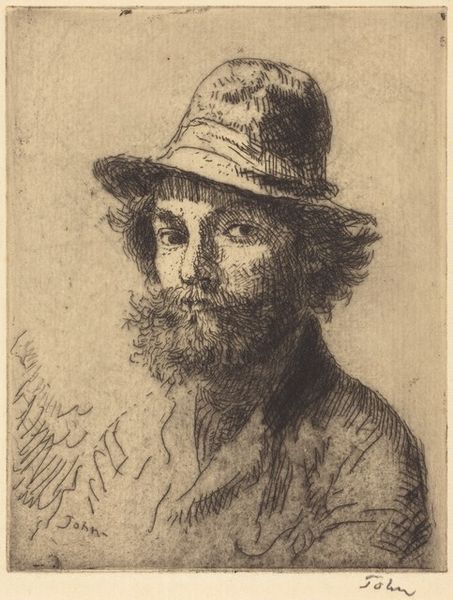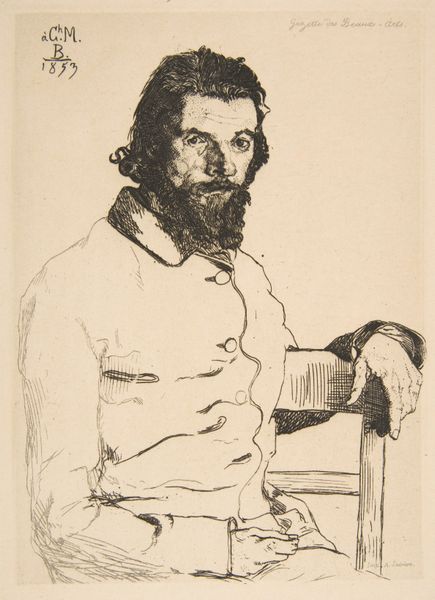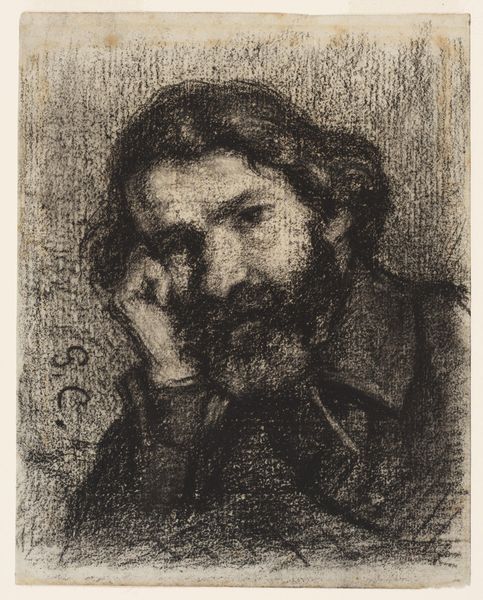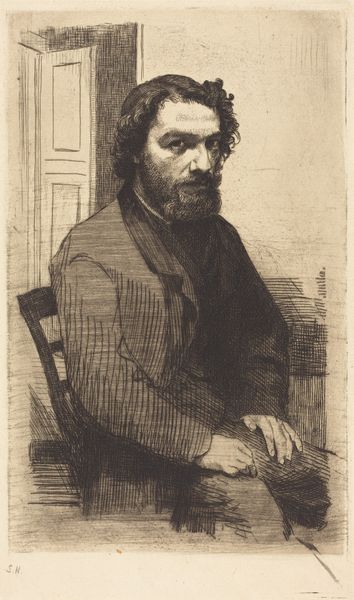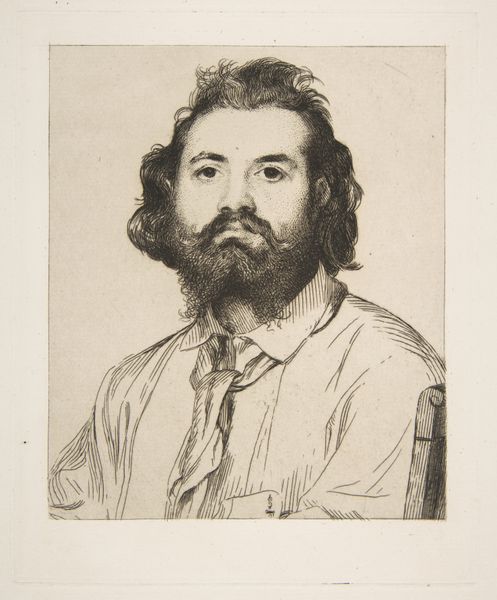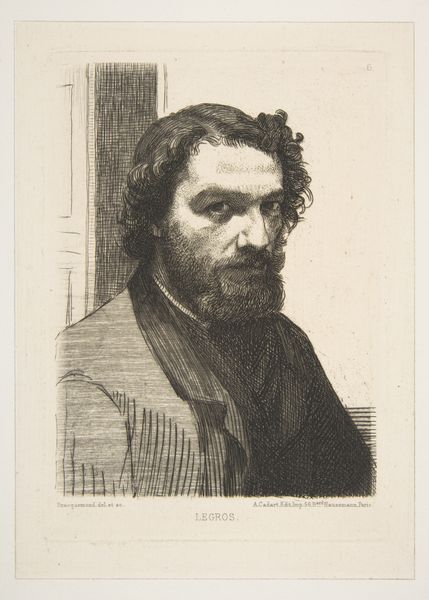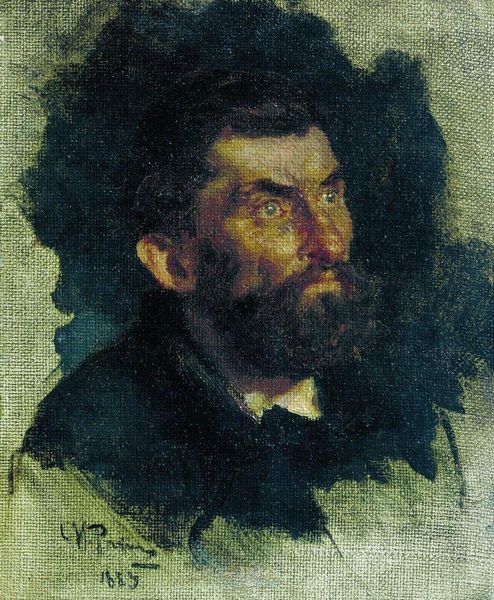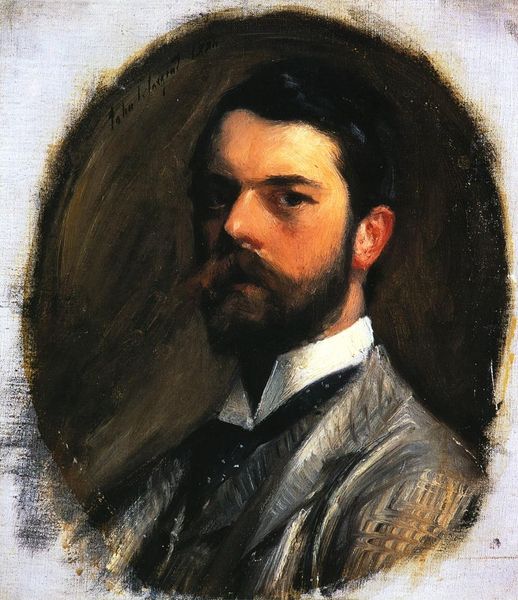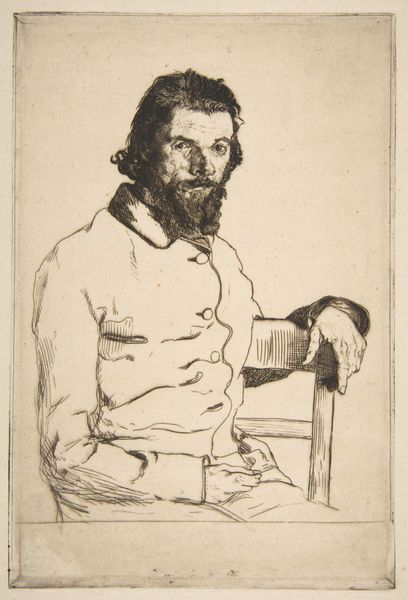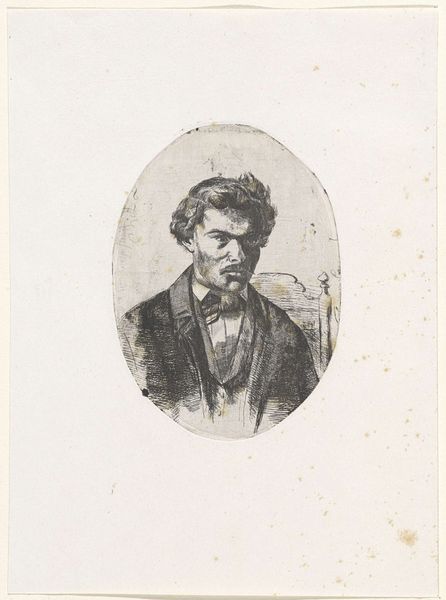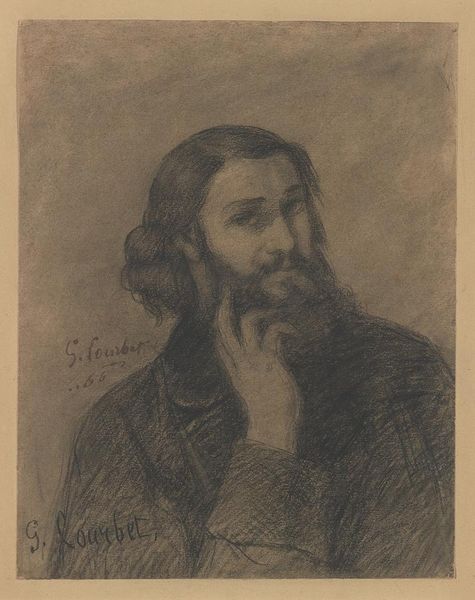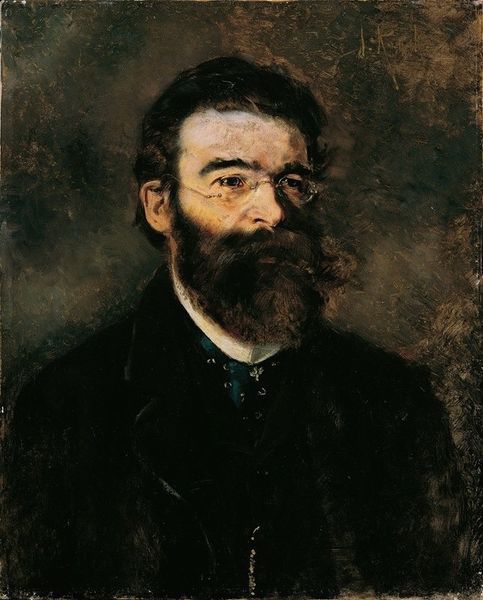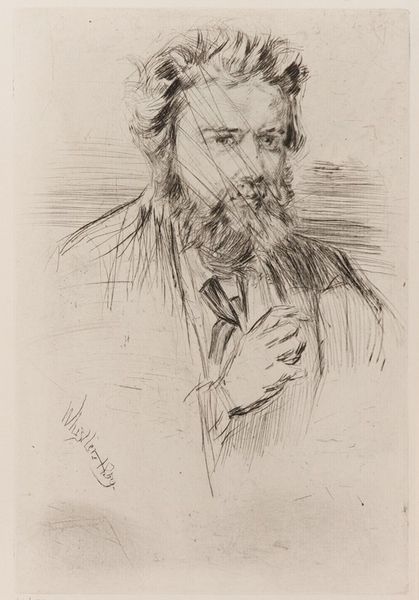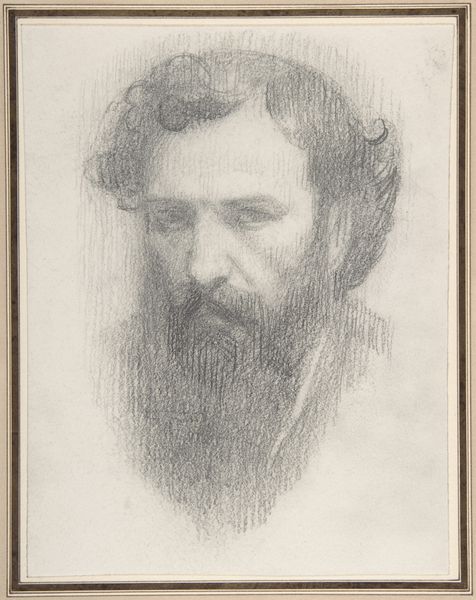
drawing, charcoal
#
portrait
#
drawing
#
self-portrait
#
charcoal drawing
#
romanticism
#
charcoal
#
realism
Dimensions: 31 x 24 cm
Copyright: Public domain
Curator: Standing before us is Gustave Courbet's "Portrait of Alphonse Promayet," rendered in charcoal in 1847. The future Realist master captures his subject with striking intensity. Editor: My first impression is of profound introspection. There’s a weight, a shadowed solemnity that almost feels Romantic in its affect, even though it is charcoal on paper. Curator: Indeed, this early piece predates the formal declaration of Realism, and still carries the influence of Romantic ideals, but its directness challenges that stylistic inheritance. Look at how Promayet's gaze, though soft, feels very present. Courbet renders his features with honesty rather than idealized beauty, typical of portraits intended for public commissions. The charcoal technique emphasizes texture and form and shadows become central. Editor: That play of shadow is powerful, and brings my attention immediately to his eyes. In Western art, eyes are frequently linked to psychological depth. Here, they are large, though heavy-lidded and only partially lit, making one wonder what is hidden in the subject’s interior world. This rendering of partial concealment heightens the air of mystery and emotional density. Curator: Absolutely. He captures Promayet not as a man of status or accomplishment, but as a man grappling with inner experience. As his early portraits and self portraits suggest, he focused on capturing truth through an individualistic approach which certainly did not align with French academic styles of the time. This portrait exemplifies a turn towards an avant-garde sensibility within early portraiture that will echo through many artists to come. Editor: Do you think there is perhaps, in the dark strokes surrounding the head, also something symbolic regarding enlightenment thought, here expressed through painterly obscurantism? Maybe his mind dwells between reason and obscurity? I note the almost classical triangular composition, a form associated with harmony and stability. I’m fascinated by what his facial hair might symbolize; the beard wasn't just fashionable, was it? Curator: The beard during this period does have significance; beards became increasingly politicized markers of rebellion or free thinking—particularly following the 1848 revolutions that would come only a year after this artwork was created. Alphonse Promayet's slightly untamed look signals the burgeoning artistic identity, and the political consciousness bubbling in the mid-19th century. I hadn’t noticed that triangular quality to the composition—but that is certainly intriguing! It just underscores that mix of tradition and rebellion you've brought out so well. Thank you. Editor: An absolute pleasure! I shall leave considering what other veiled signs he carries.
Comments
No comments
Be the first to comment and join the conversation on the ultimate creative platform.
